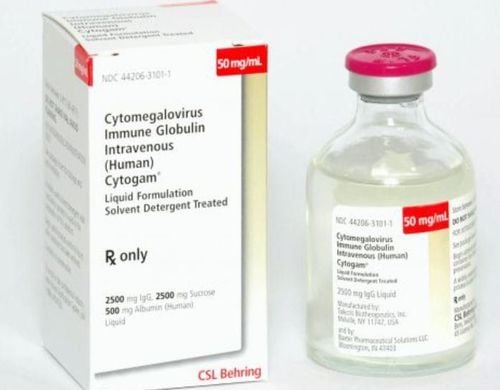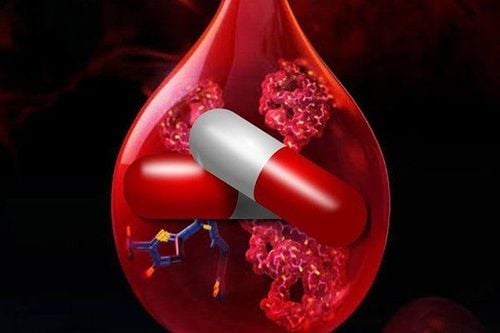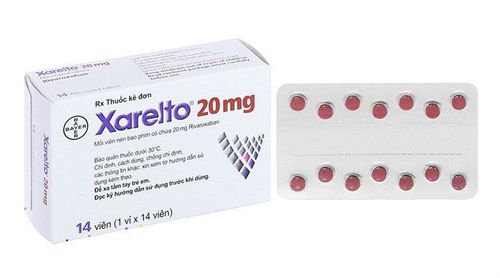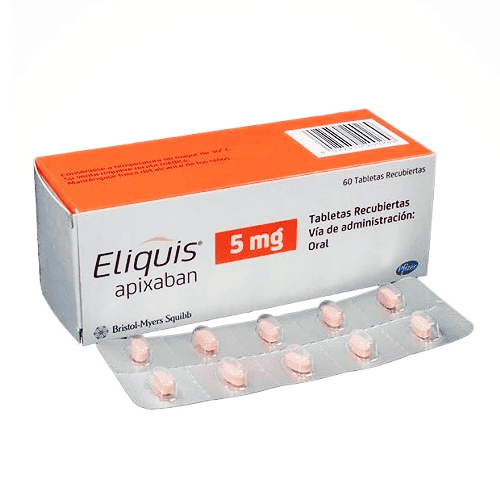This is an automatically translated article.
The article was professionally consulted with Specialist Doctor II Nguyen Quoc Viet - Department of Medical Examination & Internal Medicine - Vinmec Da Nang International General Hospital.Anticoagulants play a central role in the treatment of deep vein thrombosis of the lower extremities. The aim of anticoagulation is to prevent recurrent thrombosis, embolism, and death, which are most likely to occur during the first 3 to 6 months after diagnosis.
1. Anticoagulants used to treat deep vein thrombosis of the lower extremities
In the treatment of lower extremity deep vein thrombosis, the primary goal is to prevent pulmonary embolism. Additional treatment goals that may need to be set are: Preventing large, new blood clots and long-term complications. Therefore, the treatment of lower extremity deep vein thrombosis and pulmonary embolism is similar. In both cases, the mainstay of treatment is the use of anticoagulants.Anticoagulants are drugs that thin the blood. They don't actually dissolve the clot, but help prevent new clots from forming. Anticoagulants used in the treatment of deep vein thrombosis of the lower extremities include:
Direct oral anticoagulants: Commonly used initial anticoagulants are apixaban (brand name Eliquis), dabigatran (specifically Eliquis), and dabigatran (specifically, Eliquis). Pradaxa), edoxaban (brand name Savaysa) or rivaroxaban (brand name Xarelto). Low molecular weight heparin, injected subcutaneously: This is one of the medications for deep vein thrombosis, options include dalteparin (brand name Fragmin), enoxaparin (brand name Lovenox) and tinzaparin (brand name Innohep). ). Fondaparinux (brand name Arixtra): The drug is administered subcutaneously. Unfractionated heparin: The drug is given intravenously or subcutaneously and is the preferred choice in certain cases, playing an important role in patients requiring dialysis for renal failure. Initial anticoagulation therapy is usually 5 to 10 days with low molecular weight heparin (unfractionated heparin or fondaparinux). After that, the patient was continued to be prescribed long-term anticoagulation for 3-12 months. Oral anticoagulants are also a long-term option. The advantage of this group of drugs is that it can be started immediately after diagnosis.
In some cases, you can also substitute another oral medication called a vitamin K antagonist (warfarin) instead of a direct oral anticoagulant. However, a limitation when taking warfarin is that patients need to have regular blood tests to monitor the blood-thinning effects of the drug and make sure they are taking the correct dose.
Remaining very rare subjects, for special reasons cannot take warfarin or direct oral anticoagulants, will have to be replaced by injection of low molecular weight heparin or fondaparinux for the entire time treatment, once or twice daily.
Thus, the choice of anticoagulants in the treatment of deep vein thrombosis of the lower extremities depends on many factors, including the situation and medical history, comorbidities, cost considerations, and choice. of the patient.
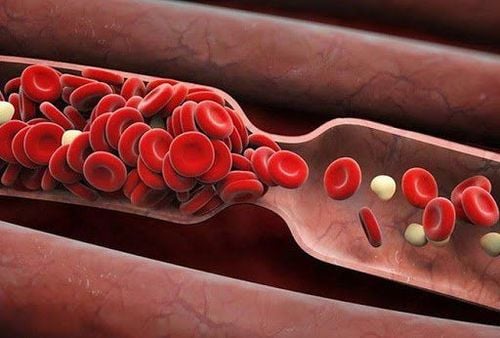
2. Duration of anticoagulation in the treatment of deep vein thrombosis of the lower extremities
Anticoagulants for deep vein thrombosis are recommended for a minimum of 3 months. However, patients with a risk factor that may contribute to the diagnosis of DVT, such as trauma, surgery, or prolonged bed rest, may treated with anticoagulants for only 3 months or until identified risk factors have resolved.Expert groups suggest that people with DVT, but with no known risk factors, may need anticoagulant therapy for an indefinite period of time. . However, in each specific case, the patient should discuss the pros and cons with the doctor after 3 months of treatment. If it is still decided to continue anticoagulation because the benefits outweigh the risks, the doctor will continue to reassess on a regular basis. Some patients decide to continue anticoagulation, which may increase the risk of bleeding, while others choose to discontinue anticoagulation facing the potential for increased risk of bleeding. repeated thrombosis.
Despite this, most experts recommend continued anticoagulation indefinitely for people who have had two or more episodes of VTE or if at least one risk factor for clotting persists. (eg, antiphospholipid syndrome, cancer).
Walking while taking DVT is recommended once the medication has been started and symptoms (eg, pain, swelling) are under control. The available studies show no increased risk of complications (pulmonary embolism) in people who get up and walk, whereas getting back to walking early can help people feel better and improve. heal faster.

3. Precautions when taking anticoagulants
3.1. Risk of other blood clots: Patients who are being treated for deep vein thrombosis are still at risk of forming another blood clot, although this risk is significantly smaller once treatment is started. Therefore, the patient should be monitored for new pain, swelling or redness in the leg. If any of these symptoms are present, call your doctor or go to the hospital as soon as possible:New-onset chest pain with difficulty breathing. Fast heartbeat or lightheadedness or dizziness. 3.2. Risk of bleeding Anticoagulants such as heparin and warfarin can cause serious side effects and should be taken as directed. In case you forget to take or miss a dose, call your doctor for advice. Do not try to make up or change your dose yourself unless your doctor specifically tells you to.
At the same time, patients are more likely to bleed when taking anticoagulants. Bleeding can occur in many places on the body, such as the nose or gums, hypermenorrhea in women... and bruises on the skin.
In some cases, if there is internal bleeding, the patient may not immediately notice it. Bleeding inside the body can make a person dizzy, lethargic, or have pain in the back and abdomen. Call your doctor or go to the hospital right away if you have these symptoms.
Because of the risk of bleeding, there are some simple changes that can reduce this risk, for example:
Use a soft-bristled toothbrush. Shave with an electric knife instead of a razor. Use caution when handling sharp objects. Avoid activities that could lead to injury. Use appropriate safety equipment during physical activity. Avoid aspirin or other nonsteroidal anti-inflammatory drugs (NSAIDS), unless directed by your doctor. It's best to take other over-the-counter pain relievers, such as acetaminophen. 3.3. Wearing a warning tag While taking anticoagulants, the patient should wear a medical bracelet, necklace, or similar warning tag at all times. This is a means to help warn of the risk of excessive bleeding when the patient himself loses consciousness due to an accident.
In conclusion, anticoagulation is still the main method in the treatment of deep vein thrombosis of the lower extremities because of its non-invasiveness, rapid effectiveness, low risk of complications, and positive improvement in morbidity. , dead. However, because of the increased risk of bleeding, before starting anticoagulant therapy, patients should be carefully counseled on how to recognize abnormal symptoms for immediate hospitalization and timely treatment.
Please dial HOTLINE for more information or register for an appointment HERE. Download MyVinmec app to make appointments faster and to manage your bookings easily.






